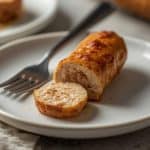Talking about Japanese Knives Facts, we need to know about the history first. The first antiques of Japanese blades date from the Nara Era (710-794), and are on display at Nara prefecture’s Shosoin (; Imperial Treasure House).
The blade and handles were long and slender, with a little curvature with a length of 40cm and a width of 2cm. This sort of knife is supposed to have been employed by the nobility for religious events. The knives, known as Hocho-shiki (meaning “knife ceremony”), were used to break down carps and cranes to music.
Japanese Knives Facts: Evolution Beyond Samurai Swords
There is no doubt that the technological development of Japanese swords greatly contributed to the development of Japanese knives. The Katana was a sword used only by Samurai, members of the military nobility who served feudal lords. Blade technology was greatly boosted by the creation of this class followed by the demand for swords.
The main sword production regions during the feudal tumult of the Sengoku Era (1454-1573) were Okayama, Kanagawa, Kyoto, Nara, and Gifu prefectures. These four regions were the strongest for feudal warlords, not coincidentally.
During the Edo Period (1603-1868), however, demand fell due to relative peace and isolation from the rest of the world. Demand for kitchen knives and farming equipment such as ax, saws, and hatchets surged as a result of the lack of conflict and battles (and thus citizens being able to enjoy a non-combative lifestyle).
During the Meiji Restoration in 1868, the manufacture and possession of weapons, including Katana, were outright prohibited. Violations of the Sword Abolition Edict () would result in the confiscation of violators’ swords by the police. As a result of this law, swordsmiths and artisans lost their jobs.
Many of these artisans switched from producing swords to kitchen and household blades to adapt to changes in time. By applying centuries-old sword-making knowledge to their superior products, some produced superior products. Sakai (*), in Osaka, is a well-known example. Sakai produced blades since the Heian Era (794-1185), and was famous for their guns, swords, and tobacco cutting knives during the Muromachi Era (1336-1573). To this day, the Sakai area still produces high-quality Japanese knives, which are highly regarded by chefs around the world.
Japanese Knives Facts: Material
Japanese knives are generally manufactured from Hagane (a form of carbon steel). With a brittle carbon steel core and a softer iron steel outer layer, the blades are forged in many layers. This combination produces a razor-sharp edge, akin to that of a Japanese sword. Hagane is not as robust as stainless steel, therefore it can be chipped by thick fish bones and rusted by leftover food or water droplets on the blade. As a result, expert cooks maintain their knives meticulously to avoid dullness and corrosion.
Western knives and Japanese knives for household use are made of stainless steel, which is easy to maintain and durable. They are rust and corrosion resistant, and are ideal for those who do not wish to maintain a Hagane knife frequently. It’s important to note that stainless steel knives are not inferior to Hagane; they retain their edge longer and are easier to sharpen.
Japanese Knives Facts: Bevel
The traditional Japanese knife has a single-bevel blade with a sharpened edge on one side of the blade surface and a completely straight side. The edge of the sword makes it ideal for slicing motions; think of the Samurai action scene where he slices down his enemies diagonally. Sharpening the blade involves sharpening only one side at a time. Left-handers, however, require a specialty leftie knife, which can be quite expensive, because single-beveled knives are made for right-handed users.
Western knives, on the other hand, have double bevels. A blade edge with a V-shaped profile is typical of double-beveled blades. The blade is much easier to sharpen, even though it isn’t made for very precise cutting.
Varieties of Japanese Knives
The world of Japanese knives is vast, but not to worry! Japanese cooks use only one or two of the basic knives, whereas the specific purpose knives are primarily used by chefs and professionals. For those who are curious, here is a list of Japanese knives you may see in a Japanese knife shop.
Knife craftsmanship varies regionally in Japan, with Kanto (eastern Japan, where Tokyo is located) and Kansai (central Japan, where Kyoto and Osaka are located) styles being the most common. Looking for best Japanese Knives? We have a list of review you can check.
1. Nakiri bocho (菜切り包丁)
Nakiri knife is suitable for peeling, slicing, and chopping vegetables. A thin, straight, double-beveled blade is on the knife. Kanto knives are rectangular, while Kansai knives are rounded at the tip. The blade length is between 240mm and 300mm. It’s easier to sharpen than an Usuba and cheaper.
2. Usuba bocho (薄刃包丁)
The same as a Nakiri, but with only one bevel. The blade edge is much thinner than that of a Nakiri, which makes it perfect for cutting paper-thin slices and decorative cuts. Chefs prefer the Usuba over the Nakiri due to its precision, but for beginners, it can be difficult to sharpen the delicate blade.
3. Deba bocho (出刃包丁)
Gutting, descaling, and breaking down fish. With its thicker blade, it can handle cutting thick fish bones. There are three sizes to fit different fish sizes. Kodeba (子出刃) has a blade length of 90-120mm, Hondeba (本出刃) is the standard size around 210mm, Miokoshi Deba (身卸し出刃包丁) is 180-270mm in length.
4. Santoku bocho (三徳包丁)
The name of this all-rounder is derived from its ability to prepare meat, fish, and vegetables at the same time. The Meiji era was when western cuisine became popular among the Japanese and the distinction between western and Japanese cuisine became more blurred, leading to the creation of this versatile knife. They work well for chopping and long cutting strokes. Most Japanese families today use only one Santoku knife instead of a Deba and Usuba.
Was this helpful?
Hi there! I’m a food enthusiast and journalist, and I have a real passion for food that goes beyond the kitchen. I love my dream job and I’m lucky enough to be able to share my knowledge with readers of several large media outlets. My specialty is writing engaging food-related content, and I take pride in being able to connect with my audience. I’m known for my creativity in the kitchen, and I’m confident that I can be the perfect guide for anyone looking to take their culinary journey to the next level.









